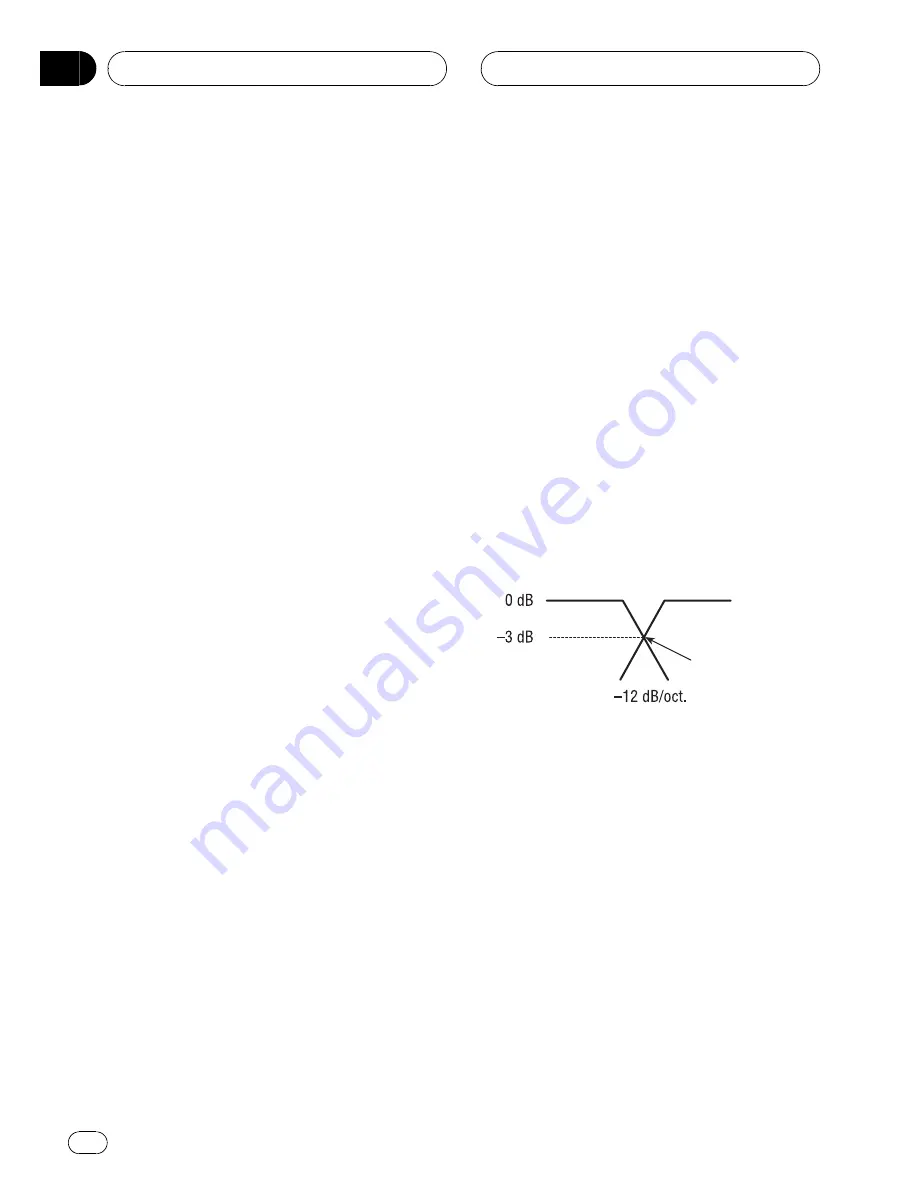
Slope
Adjusting the HPF/LPF slope (filter attenuation
slope) lets you adjust the continuity of sound
between speaker units.
!
The slope indicates the number of decibels
(dB) the signal is attenuated when the fre-
quency is one octave higher (lower) (Unit:
dB/oct.). The steeper the slope, the more
the signal is attenuated.
Phase
You can switch phase (normal, reverse) for
each speaker unit
s input signal. When the
continuity of sound between speakers is im-
precise, try switching phase. This may improve
the continuity of sound between speakers.
Points concerning network
adjustments
Cut-off frequency adjustment
!
With the low-range speaker installed in the
rear tray, if you set
Low LPF
cut-off fre-
quency high, bass sound is separated so
that it appears to come from the rear. You
are recommended to set
Low LPF
cut-off
frequency to 100 Hz or lower.
!
The maximum input power setting for mid-
dle- and high-range speakers is usually
lower than that for low-range speakers. Re-
member that if
Mid HPF
or
High HPF
cut-
off frequency is set lower than required,
strong bass signal input may damage the
speaker.
Level adjustment
The basic frequencies of many musical instru-
ments are in the middle range. First perform
middle-range level adjustment, followed by
high-range and then low-range level adjust-
ment in that order.
Slope adjustment
!
If you set a small absolute value for the
slope (for a gentle slope), interference be-
tween adjacent speaker units can easily re-
sult in degraded frequency response.
!
If you set a large absolute value for the
slope (for a steep slope), continuity of
sound between speaker units is degraded,
and sounds appear to be separated.
!
If you set the slope to 0 dB/oct. (
Pass
), the
audio signal bypasses the filter, so the filter
does not have an effect.
Phase adjustment
When the cross-over point value for filters on
both sides is set to
12 dB/oct., the phase is
reversed 180 degrees at the filter cut-off fre-
quency. In this case, reversing the phase as-
sures improved sound continuity.
Normal phase
Reverse phase
Crossover point
Muting the speaker unit (filter)
You can mute each speaker unit (filter). When
a speaker unit (filter) is muted, no sound is
outputted from that speaker.
!
If you mute the selected speaker unit (fil-
ter),
MUTE
blinks and no adjustments are
possible.
!
Even if any speaker unit (filter) is muted,
you can adjust the parameters for other
speaker units (filters).
1 Use MULTI-CONTROL to select NW 1.
The function name tag
NW 1
is highlighted.
Audio Adjustments
En
58
Section
12
















































